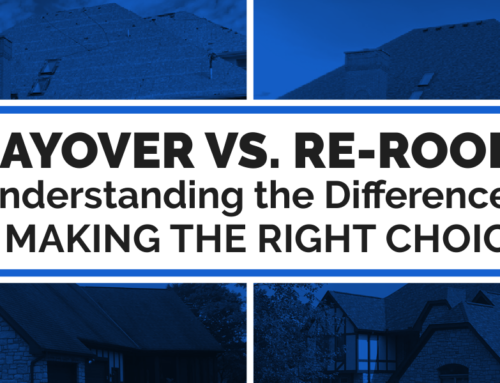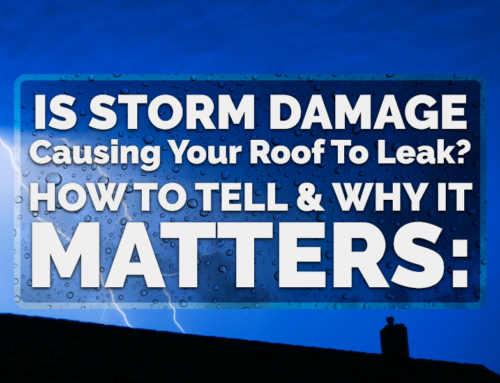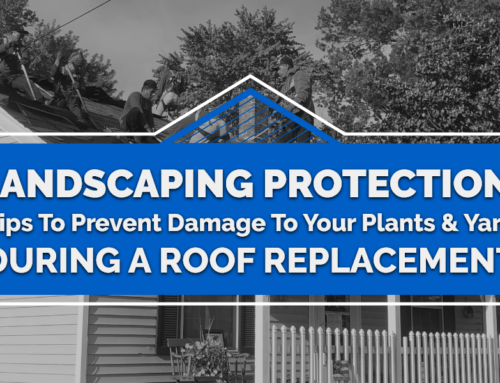I know we don’t want to think about it. Ice. Snow. Sleet. Cold. Winter. Freezing unhappiness that lays heavily on your home… Waiting to break through and create a roofing nightmare. Maybe your roof has a thick row of icicles hanging off it. Maybe your downspout has a frozen stream splashing down onto your snowy yard. You might even have a thick ridge of ice running along your eaves. If so, you are going to need to do some de-icing. There are a few ways to get that ice off your roof. Some are better than others. Read on and we’ll tell you all the ways to de-ice your roof.
A Couple Things to do Before De-icing
The first thing you should do before you tackle an icy roof beast is make sure you know where the water is coming from! It could be a leak in your roof, unsealed edges on windows, poor attic insulation, improper ventilation.
Roof ice comes in a few forms:
- Icicles
- Ice dams, which are ridges of ice along the eaves. Usually they have icicles hanging off them.
- Frozen gutters and downspouts
Second, you won’t find physically attaching the ice as a method on here. You could damage your roof or hurt yourself. It may also void your shingles’ warranty. It’s ok to knock off a few scary-looking icicles, but if you have a lot of ice to remove, use the methods we talk about below.
Heat Cables Products
Heat cables are designed to prevent ice dams, not fix them once they’re already a problem. They are electric and are installed on roofs in a zigzag pattern over uninsulated parts like eaves or garages. You can even put cables in your gutters. Heat cables don’t melt large sheets of ice, but they will maintain channels that water can use to drain.
There are a ton of options, so if you’re buying these to prevent ice dams, read the reviews.
A Snow Rake
A snow rake (or roof rake) is just a shovel to scrape snow off your roof manually. When it snows, rake off a few feet over the eaves. You can also use the rake to scrape off icy crusts. If you’re vigilant about getting out there after a big snowfall, the snow rake is a great idea.
De-icing Chemicals
De-icing chemicals work really well. You lay on a thick layer over your ice and wait for it to melt. The important thing to consider when you’re using chemicals is whether they’re going to damage your roof.
 In general, the least expensive, most effective de-icers are highly corrosive and should not be used on a roof.
In general, the least expensive, most effective de-icers are highly corrosive and should not be used on a roof.
Avoid de-icers with NaC1 (Sodium Chloride) CaC12 (Calcium Chloride). Thick, rocky de-icer will cut through ice quickly. Fine, powdery de-icer is slower and needs to be laid on thick. For thick blocks of ice, use liquid de-icer. These products work best in mild weather, and they’re not intended for large areas.
Keep an Eye on your Snow Load
Ice isn’t the only thing that can cause problems for your roof. Now is also your roof’s enemy. Most roofs in the Cincinnati area are designed to have snow slide right off, but sometimes you need to do some snow removal.
After large snowfalls, flat roofs in particular are at risk for damage. Commercial property owners should bring in the professionals.
A little bit of snow on a roof isn’t a bad thing. It can be a sign that your house is well insulated. A lot of snow or snow and ice are signs of trouble. There’s no exact explanation on how much weight your roof can bear, but Popular Mechanics helps give you an idea in their article, “How Much Snow is Too Much for your Roof”
De-icing your roof isn’t a DIY thing. You need roof experts to safely and effectively evaluate if your roof can handle the load of ice and snow this winter. At Titan Siding and Roofing, we have the skills and experience to identify potential problems from ice dams and do roof repair when you need it.





